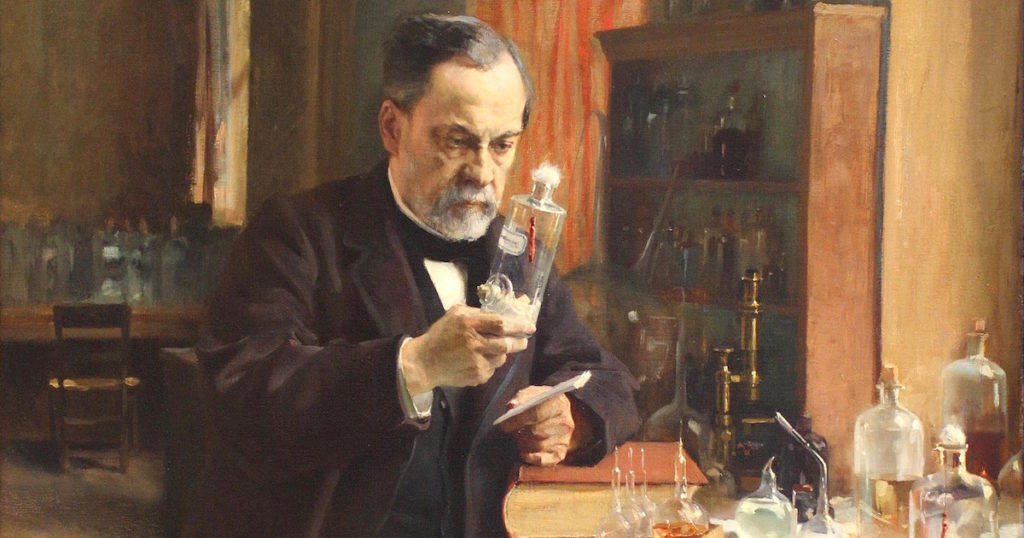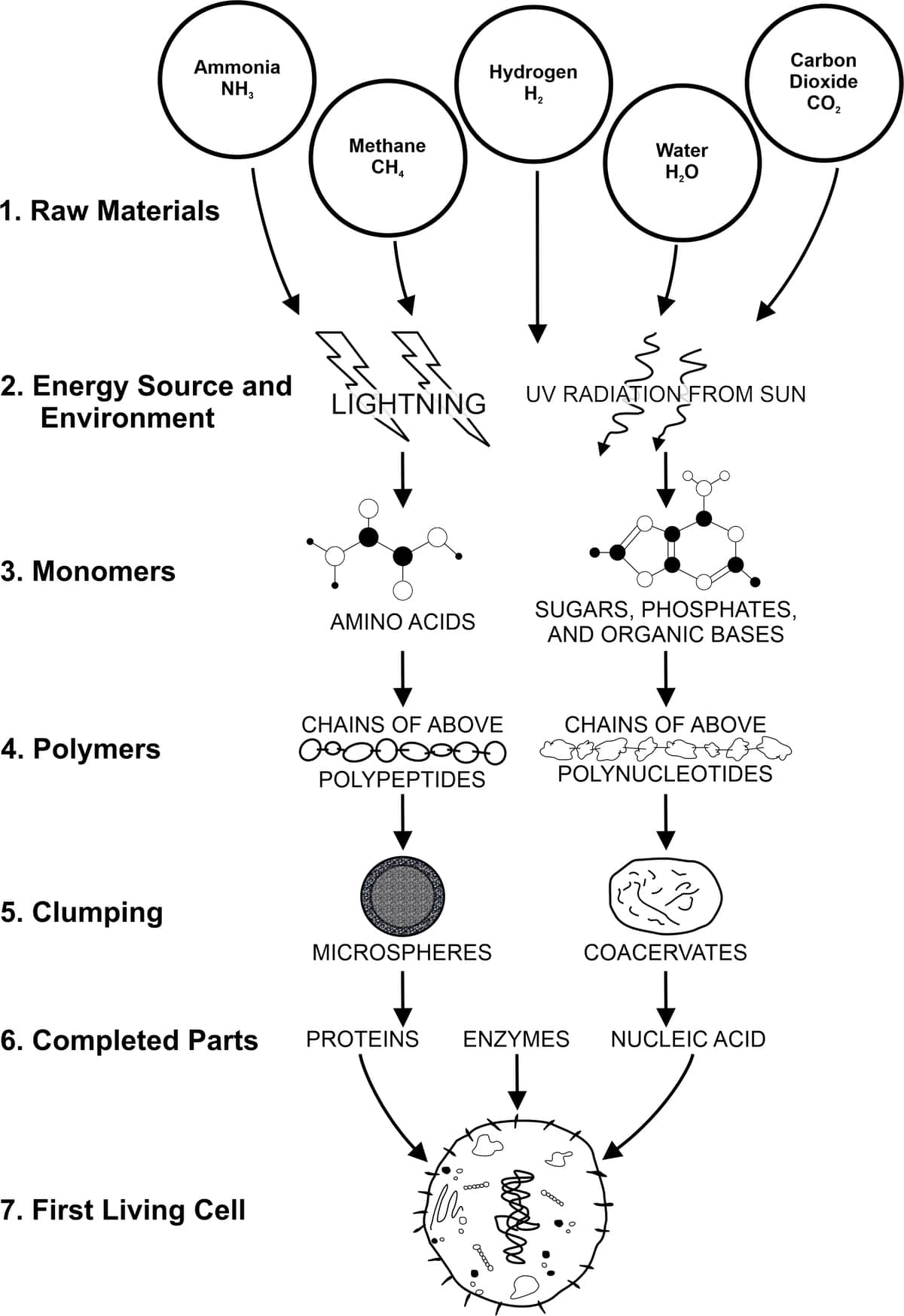 Evolution
Evolution
 Intelligent Design
Intelligent Design
All Living Systems Must Process Energy, Store and Utilize Information, and Replicate

Editor’s note: We are delighted to present a series by Walter Bradley and Casey Luskin on the question, “Did Life First Arise by Purely Natural Means?” This is the second entry in the series, a modified excerpt from the recent book The Comprehensive Guide to Science and Faith: Exploring the Ultimate Questions About Life and the Cosmos. Find the full series so far here.
Aristotle posited the idea of spontaneous generation of life from nonliving matter, or abiogenesis, that held sway for two millennia. But in 1859, Louis Pasteur showed persuasively — with a clever set of experiments — that what appeared to be life springing forth from nonliving matter was actually life emerging from exceedingly small living organisms, not lifeless matter. Pasteur’s experiments were widely seen as having settled the question of whether life could only come from preexisting living matter, a process called biogenesis. In 1864, Pasteur triumphantly predicted to the science faculty at the Sorbonne in Paris, “Never will the doctrine of spontaneous generation recover from the mortal blow of this simple experiment.”1 Pasteur’s view remained dominant for almost a century.
In 1924, after sixty years of virtual silence since Pasteur’s experiments, the Russian biochemist Alexander Ivanovich Oparin proposed that the complex molecular arrangements and associated functions of living systems evolved from simpler molecules that preexisted on the lifeless, primitive Earth. With this bold speculation, a recognizably modern hypothesis of how life might have arisen, Oparin reopened the discussion of abiogenesis.2
A Rationalist Biologist
In 1929, the British biologist J. B. S. Haldane published a paper in the Rationalist Annual speculating on what initial conditions might be most favorable for a naturalistic origin of life.3 He imagined an early Earth atmosphere rich in gases that was acted upon by lightning that caused chemical reactions to produce various building blocks for life — such as sugars and simple amino acids. In Haldane’s view, these molecules might become sufficiently concentrated in oceans, or more likely in lakes and ponds, such that they could chemically react to form long polymer chains that today we know are the key components in living cells (i.e., protein, DNA, and RNA).4 In 1944, the noted quantum physicist Erwin Schrödinger observed that living systems are characterized by highly ordered, aperiodic structures that survive by continually utilizing (chemical or radiant) energy from their surroundings.5 In 1952, Harold C. Urey proposed that the Earth’s early atmosphere was rich in hydrogen, ammonia, and methane—chemicals that both provided the elemental building blocks and the energy to facilitate the chemical reactions necessary to make primary biopolymers, the chemical building blocks of life.6
Many Additional Steps
The review above outlines early theories about generating the building blocks of life on Earth. But many additional steps would be needed for the origin of life to occur, which are sketched in the figure below.7 In our next post in this series, these various steps in a hypothetical origin-of-life scenario will be reviewed so that you can judge for yourself whether current theories are plausible.

First, though, it is vital to define the problem. As noted already, all living systems (1) process energy, (2) store information, and (3) replicate. In nature, these processes are performed primarily by molecules from three families of large biopolymers: proteins, DNA, and RNA. The mystery of how life began is essentially the mystery of how these three types of biopolymers formed and congregated within a cell with a barrier made of lipids as a self-replicating system.
Next, “A Mystery: Prebiotic Synthesis of Simple Organic Monomers.”
Notes
- R. L. Devonshire, The Life of Pasteur, translated R. Vallery-Radot (New York: Doubleday, 1920), 109.
- Alexander I. Oparin, Proiskhozhdenie Zhizni (Moscow, Russia: Izd. Moskovski Rabochii, 1924), translated as Origin of Life by S. Morgulis (New York: Macmillan, 1938).
- J. B. S. Haldane, “Origin of Life,” Rationalist Annual 148 (1929), 3-10. For a discussion of Haldane’s views, see Stéphane Tirard, “J.B.S. Haldane and the origin of life,” Journal of Genetics 96 (November 2017), 735-739.
- J. D. Bernal, “The Physical Basis of Life,” paper presented before British Physical Society in 1949, found in The Physical Basis of Life (London, UK: Routledge, 1951).
- Erwin Schrödinger, What Is Life? The Physical Aspect of the Living Cell (Cambridge, UK: Cambridge University Press, 1944).
- Harold C. Urey, The Planets: Their Origin and Development (New Haven, CT: Yale University Press, 1952).
